
How to check a car generator?
Content
The autonomous system of a car is powered by two types of energy. One of them is mechanical energy that arises during the operation of various components and assemblies. For example, in an internal combustion engine due to microexplosions, shocks occur, setting in motion a whole group of mechanisms - crank-connecting rod, gas distribution, etc.
The second type of energy, thanks to which various components of the car work, is electricity. The battery is a constant source of energy in the car. However, this element is not able to provide energy for a long time. For example, each spark in a spark plug requires an electrical impulse, first from the crankshaft sensor and then through the ignition coil to the distributor.
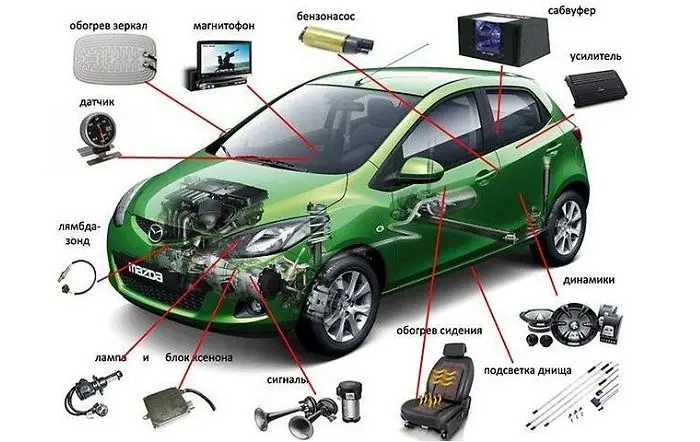
In order for the car to travel more than one thousand kilometers without the need to recharge the battery, its equipment includes a generator. It generates electricity for the vehicle's on-board network. Thanks to this, the battery not only retains its charge to start the motor, but also recharges along the way. This element is considered a fairly stable part, but periodically it also breaks down.
Generator device
Before considering the different options for checking the generator, you need to understand its device. This mechanism is driven through a belt drive from the crankshaft pulley.
The generator device is as follows:
- The drive pulley connects the device to the motor;
- Rotor. It is connected to a pulley and rotates constantly while the machine is running. A part with an individual winding on its shaft there are slip rings;
- Fixed element with individual winding - stator. When the rotor rotates, the stator winding generates electricity;
- Several diodes, soldered into one bridge, consisting of two plates. This element converts alternating current to direct current;
- Voltage regulator and brush element. This part provides a smoother supply of electricity to the on-board network (without surges and in accordance with the number of active consumers);
- Body - protective covers and hollow metal structure with ventilation holes;
- Bearings for easy shaft rotation.
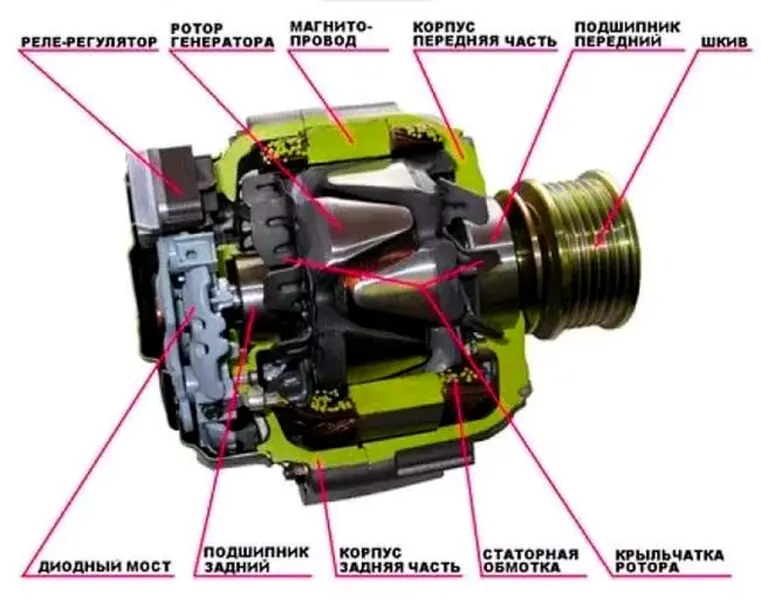
While the rotor is spinning, a magnetic field is created between it and the stator. The copper winding responds to it, and electricity is generated in it. But constant energy production requires changing the magnetic field flux. For this purpose, the structure of the rotor and stator contains steel plates that form windows.
An alternating voltage is generated on the stator winding (the poles of the magnetic field are constantly changing). The diode bridge ensures stable voltage polarity so that low-power equipment can operate properly.
Generator malfunctions
If we conditionally divide all the breakdowns of the device, then the car generator fails due to electrical or mechanical problems. As for the second category, most of them are diagnosed by visual examination. An example of this may be difficult rotation of the pulley (inoperability of bearings) or jerking during rotation - the parts cling to each other.
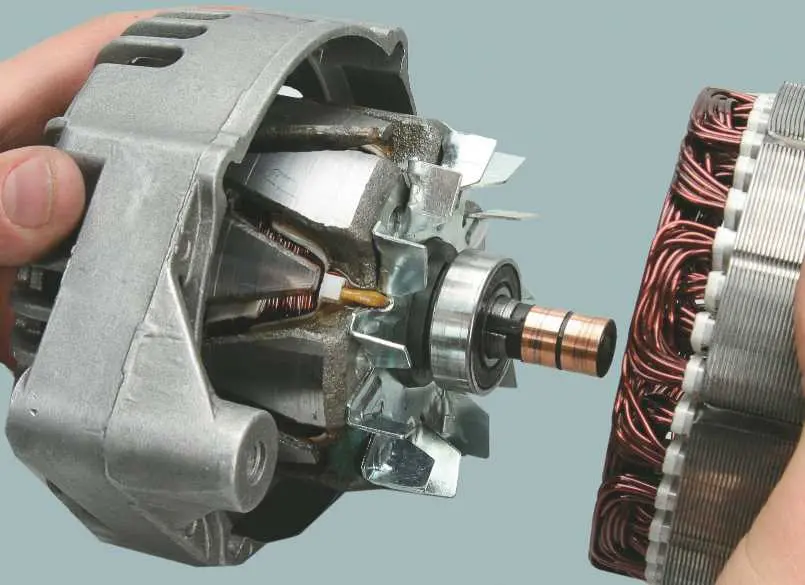
However, verification of the electrical properties of the device is not possible without additional equipment. Electrical breakdowns include:
- Wear of brushes and rings;
- The regulator burned out or the formation of breakdowns in its circuit;
- One (or more) of the bridge diodes has burned out;
- Burned out winding in rotor or stator.
Each breakdown has its own test method.
How to check the generator without removing from the car
An oscilloscope is required to perform this kind of diagnosis. This device will "read" all existing faults. However, such work requires certain skills, because only a qualified specialist is able to understand the charts and different numbers. For this reason, the car is sent for diagnosis to the service station.
For the average motorist, there are more budgetary methods that allow you to check the generator without even having to dismantle it. Here are some of them:
- We start the engine. Disconnect the "-" terminal from the battery. At the same time, the car must continue to work, since the normal mode implies autonomous power generation. The disadvantage of such diagnostics is that it is not applicable for relay modifications of generators. It is better not to check a modern car like this, since some elements will not cope with power surges. The diode bridge in new car models should not work without load;
- The multimeter is connected in accordance with the poles of the battery. In a quiet state, the voltage is in the range from 12,5 to 12,7 volts (charged battery). Next, we start the engine. We follow the same procedure. With a working device, the multimeter will show from 13,8 to 14,5 V. And this is without additional load. If you activate more powerful consumers (for example, it can be a multimedia system, a stove and heated windows), the voltage should drop to at least 13,7 volts (if lower, then the generator is faulty).
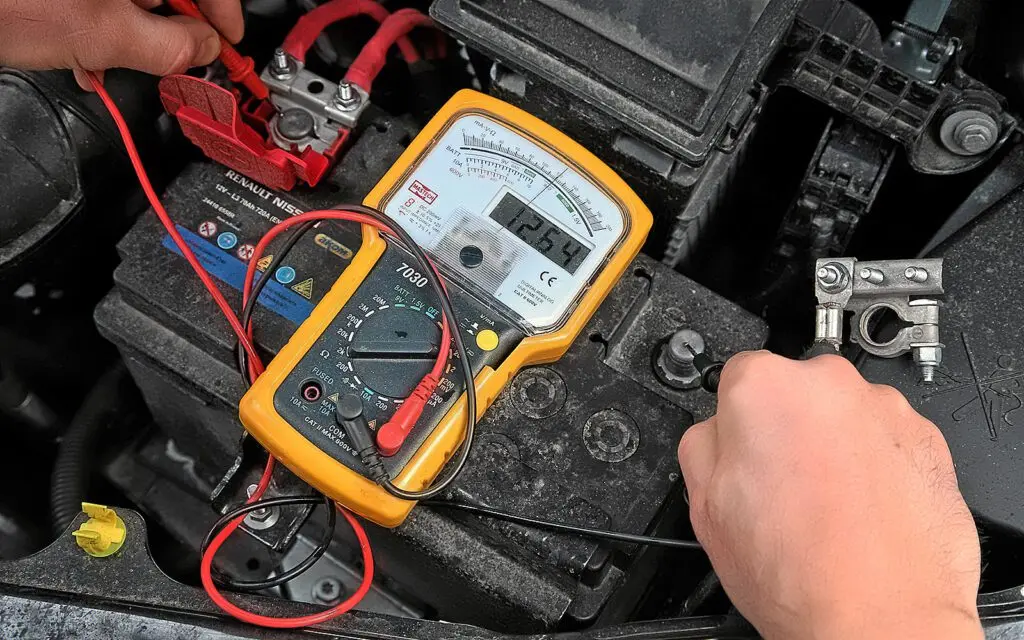
There are also small "tips" that a generator on the verge of breakdown can give:
- At low speed, the headlights flicker - check the condition of the regulator;
- The howl of the generator when a load is given to it - check the efficiency of the diode bridge;
- Drive belt squeak - adjust its tension. Belt slippage results in unstable energy production.
How to check brushes and slip rings
These elements may have mechanical damage, so first of all we inspect them. If the brushes are worn out, they just need to be replaced with new ones. Slip rings also have wear properties, so they check the thickness and height of the brushes, but also the rings.
Normal parameters are indicated by the manufacturer, but the minimum size of these elements should be:
- For brushes - a height indicator of at least 4,5 millimeters;
- For rings - a minimum diameter of 12,8 millimeters.
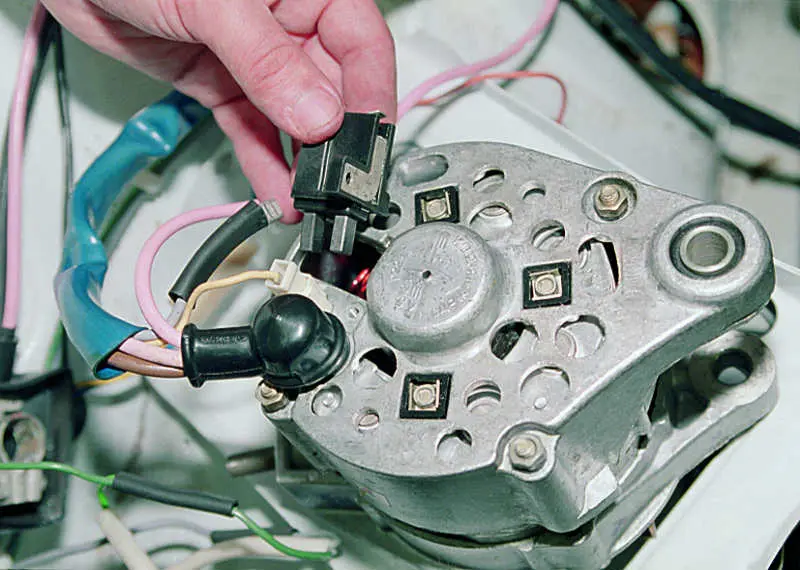
In addition to such measurements, parts are checked for the presence of non-standard workings (scratches, grooves, chips, etc.).
How to check a diode bridge (rectifier)
Such a breakdown often occurs if the battery is connected in the wrong polarity (the "+" terminal is put on the minus, and the "-" - on the plus). If this happens, then many of the car's devices will immediately fail.
To prevent this, the manufacturer strictly limited the length of the wires to the battery. But if a battery of a non-standard shape is purchased, you should know which terminal corresponds to which pole.
First, we check the resistance on one plate of the diode bridge, and then on the other. The function of this element is to provide conductivity in one direction only.
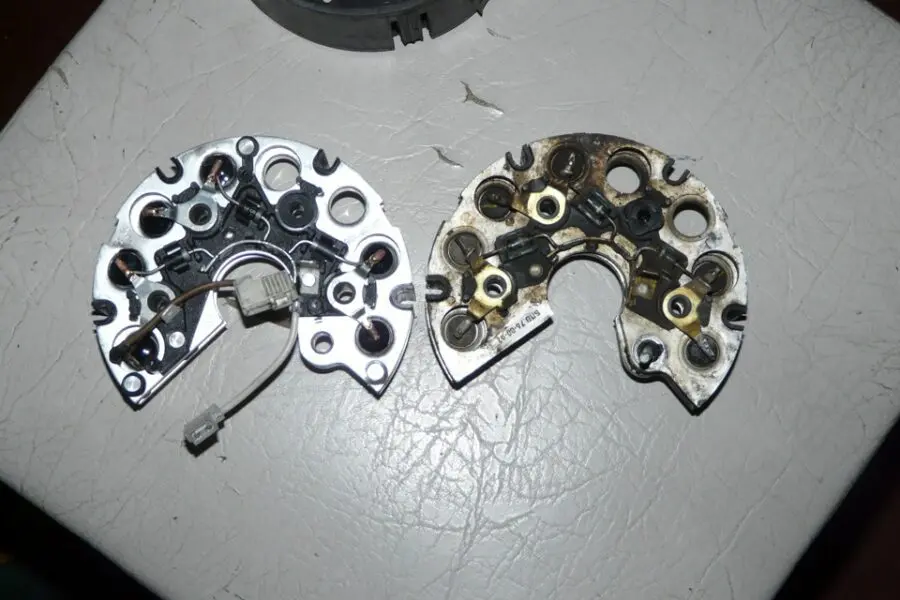
Diagnostics is carried out as follows:
- The positive contact of the tester is connected to the “+” terminal of the plate;
- With a negative probe, touch the leads of all diodes in turn;
- The probes are swapped and the procedure is identical.
According to the diagnostic results, the working diode bridge will pass current, and when the probes are changed, it will create maximum resistance. The same goes for the second plate. Small subtlety - the resistance should not correspond to the value of 0 on the multimeter. This will indicate a breakdown in the diode.
Due to a faulty diode bridge, the battery does not receive the necessary energy for recharging.
How to check the voltage regulator
If, during the check with the load plug, an undercharge of the battery or its overcharge was detected, then you need to pay attention to the regulator. The norms for a working regulator have already been mentioned earlier.
The resistance index of the capacitor is also determined. On the tester's screen, this value should decrease as soon as the probes are connected to it.
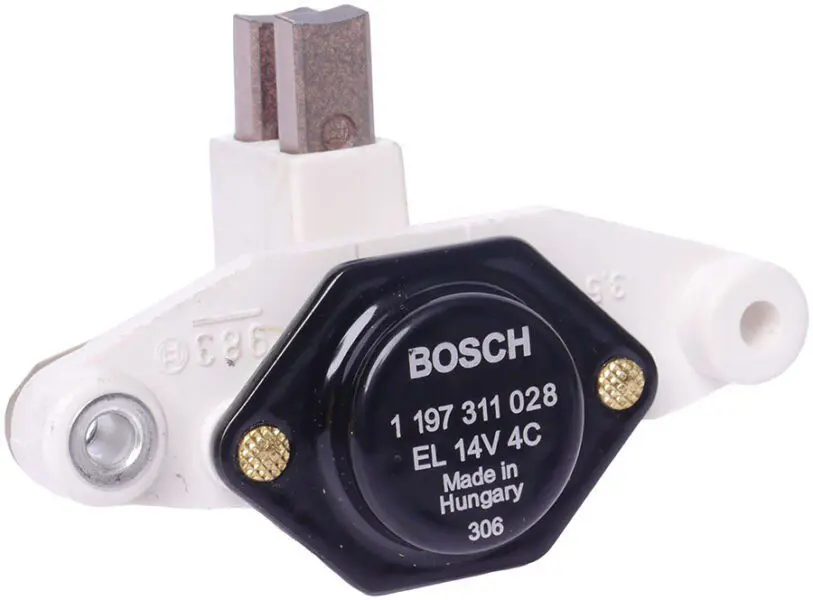
Another way to test the regulator is with a 12 volt test light. The part is disconnected and a control is connected to the brushes. The positive contact is connected to the plus of the power source, and the minus of the battery is placed on the regulator body. When 12V is supplied, the lamp lights up. As soon as the voltage rises to 15V, it should go out.
How to check the stator
In this case, you also need to pay attention to the resistance indicator (in the winding). Before measurements, the diode bridge is dismantled. A serviceable winding will show a value of about 0,2 Ohm (outputs) and a maximum of 0,3 Ohm (at the zero and winding contact).
The howl of the power source indicates a breakdown or short circuit in the winding turns. You should also check if there is a wear on the surfaces of the metal plates of the part.
How to check the generator rotor
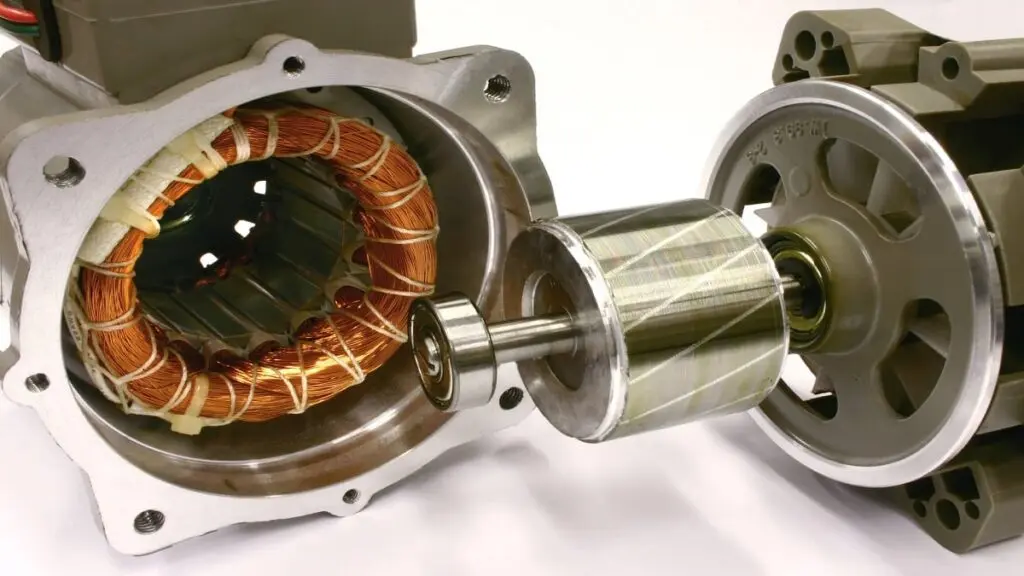
First, we "ring" the excitation winding (it creates a small pulse of electricity, which causes electromagnetic induction). The resistance test mode is set on the multimeter. The resistance between the rings (located on the rotor shaft) is measured. If the multimeter shows from 2,3 to 5,1 Ohm, then the part is in good order.
A low resistance value will indicate the closure of the turns, and a high one - a winding break.
Another test done with the rotor is to check for energy consumption. In this case, an ammeter is used (the corresponding multimeter mode), 12V is supplied to the rings. Where the circuit breaks, the device will show from 3 to 4,5, if the element is working properly.
At the end of the diagnosis, the insulating layer is checked for resistance. The procedure is as follows. We take a 40-watt bulb. We connect one end of the wire to the outlet, and the other to the body. The other contact of the socket connects directly to the rotor ring. With good insulation, the lamp will not glow. Even the slightest incandescence of the spiral will indicate a leakage current.
If, as a result of diagnostics of the generator, a breakdown of one of the elements was found, the part changes - and the device is like new.
Here's a short video on a quick generator test:
So, if the car's generator is faulty, the car's on-board network will not last long. The battery will drain quickly and the driver will have to tow his vehicle to the nearest service station (or call a tow truck for this). For this reason, every car owner should be attentive to the warning light with the battery symbol.
Questions and answers:
How to check if there is charging from the generator to the battery? The thick wire of the generator is removed (this is +). One probe of the multimeter is connected to the + battery, and the second probe is connected to the free contact of the generator.
How can you tell if a generator is not working on a machine? Difficulty starting the internal combustion engine (the battery is poorly recharged), flickering of light while the engine is running, the battery icon on the tidy is on, the whistle of the alternator drive belt.
How to check the generator is working or not? Measurement of the output current. It should be between 13.8-14.8V (2000 rpm). Failure under load (the stove is on, the headlights are heated glass) up to 13.6 - the norm. If below, the generator is faulty.
How to check the generator's serviceability with a multimeter? The multimeter probes are connected to the battery terminals (according to the poles) while the motor is running. At any speed, the voltage must be within 14 volts.